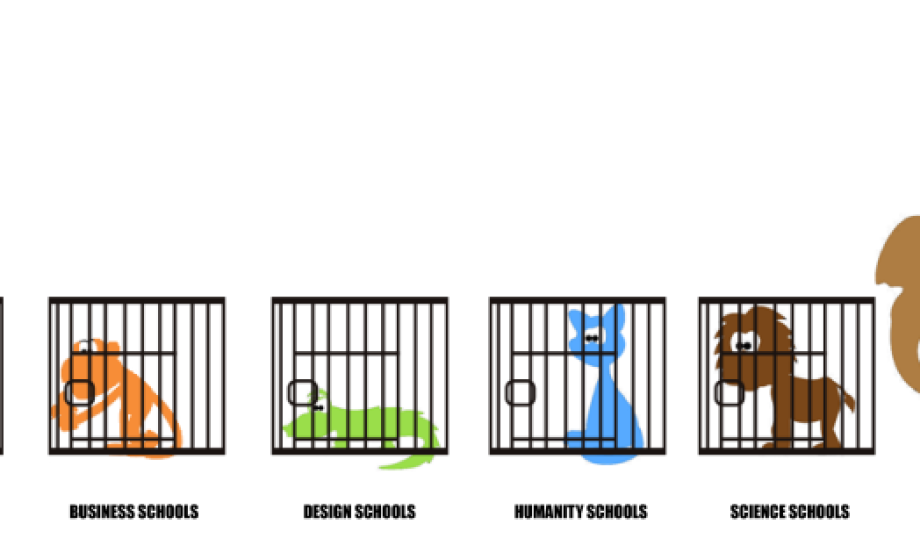Skimming through the alumni magazine of my undergraduate engineering school, I stumbled onto an article about a student project from a course called Data as Art.
Data as Art is a course that groups students from my engineering school alma mater with the School of the Art Institute of Chicago in a combined art-meets-engineering curriculum. The course strives to bridge the boundaries between art and engineering, and thus break down the expectations of conventional thinking. Class teams comprised both engineering students and aspiring artists, challenged to collaborate on a project that translates complicated data sets into visual arts that an average viewer can understand.
“I usually think about presenting my work for the scientific community. I’ve now started thinking in more aesthetic terms.”
– engineering student in the Data as Art class
The joint course from the Northwestern Engineering / Art Institute schools is new, but interdisciplinary curricula are prevalent across practically every university campus in the US. The academic diversity on offer used to be a selling point of liberal arts colleges trying to differentiate themselves but became commonplace decades ago when vocational trade schools fell out of favor toward broad-based education.
Even at the graduate school level:
– the business school teams up with the journalism school on a course
– the medical school collaborates with the law school, etc.
While there is a legitimate debate taking place in the States right now about renewing an emphasis on trade schools, I was triggered to think about the topic from a different angle.
Specifically, I wonder if the general lack of cross-disciplinary curricula in France’s higher education holds this country back in innovation.
In the past, the French system more or less worked. Innovation was largely predicated on technological progress, be it disruptive or incremental. France’s elite universities like Ecole Polytechnique and Ecole Normale Supérieure produced some of the most focused, intelligent engineers who in turn developed sophisticated technologies subsequently forming the basis of global private sector powerhouses.
Yet the world is of course different now, as readers of this or any startup blog know all too well. Innovation is no longer limited to the fruits of advanced technology research. The innovative component of a successful startup can occur through its business model, distribution channel, even packaging.
Some of the most groundbreaking insights arise from the intersection of disparate disciplines.
Conversely, the French government defines innovation as a direct function of R&D effort. This definition is too narrow.
With such a narrow view of how innovation sprouts, compartmentalizing educational subjects into silos might seem deceptively appealing. This is unfortunate. Isolating academic disciplines restricts the opportunity for those Eureka! moments that come from chance campus cafeteria conversations between students (or faculty) of different academic departments.
The chasm is even more pronounced in the deliberate separation of research from education. Research in France takes place in specialized research institutions like CNRS, INRIA, and INSERM, whereas education takes place in, well, educational institutions.
Engineers are trained for problem solving. Artists are taught to find a problem.
Entrepreneurship is (thankfully) becoming more appreciated in France. Many leading French universities encourage entrepreneurial projects in coursework, host startup clubs, and even offer dedicated entrepreneurship courses. However, it’s not uncommon to see a university’s entrepreneurship course simply strive to take a technology out of a place like INRIA and try to jam it into a product-market fit somewhere (not to pick on the professors of these courses, I know VCs that espouse this same philosophy).
I’ve noticed that the cross-fertilization of diverse disciplines often forms the basis of the best startups. It’s a shame that this phenomenon is not fostered more at the French university level.
[credit: graphic by Junjie Peng]

